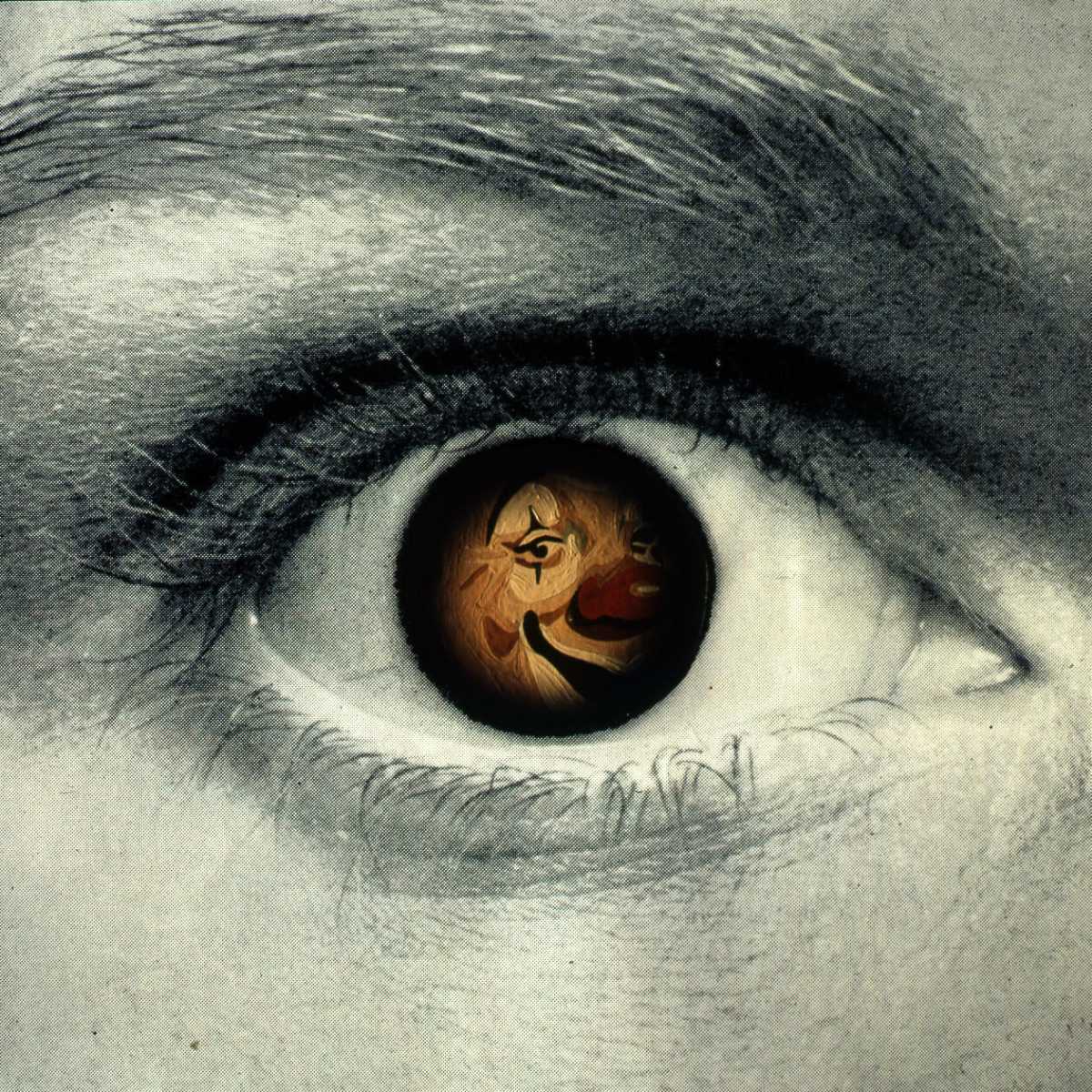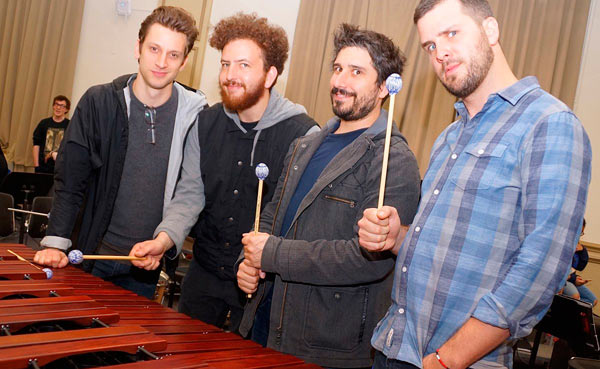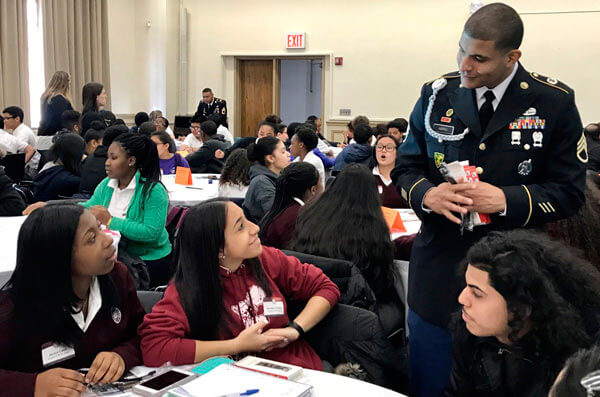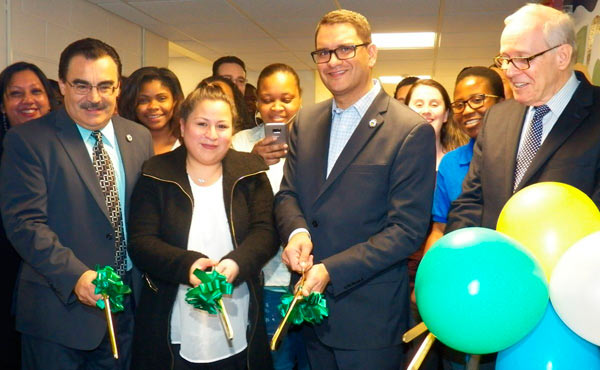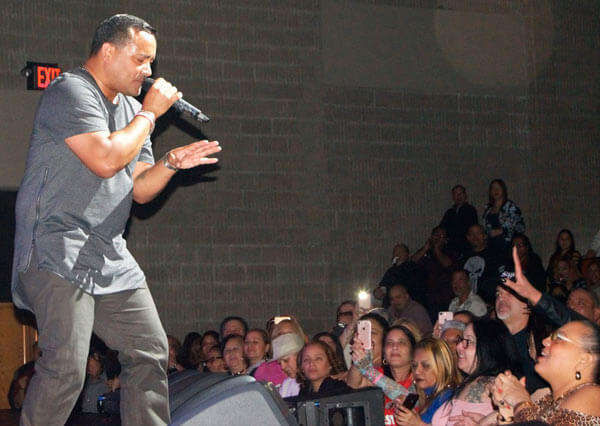The Lehman College Art Gallery is holding an exhibition, “The Eyes Have It,” which features painting, sculpture, photography, video and site-specific installation, from 48 contemporary artists who explore the eye and its importance literally and symbolically in art as well as its significance, today, in a world populated by screens, monitoring devices and media dominated by moving visual images.
Lehman College Art Gallery opened its Edith Altschul Lehman and Robert Lehman wings from Aug. 31 through Nov. 13 to the work of artists from Pakistan and Guatemala, from Greece, Italy and Spain, the Bahamas, Canada and London, and across the United States, from Maryland to California. Their works, created in the last decade, truly bring “the eyes of the world” to the Gallery and exemplify the need to see and be seen ― the central pillar of the visual arts.
In the gallery’s Rotunda, Sima I. Schloss’ 30-foot, site-specific installation “The Eyes Have It,” allows for interconnectivity among all the exhibition’s works.
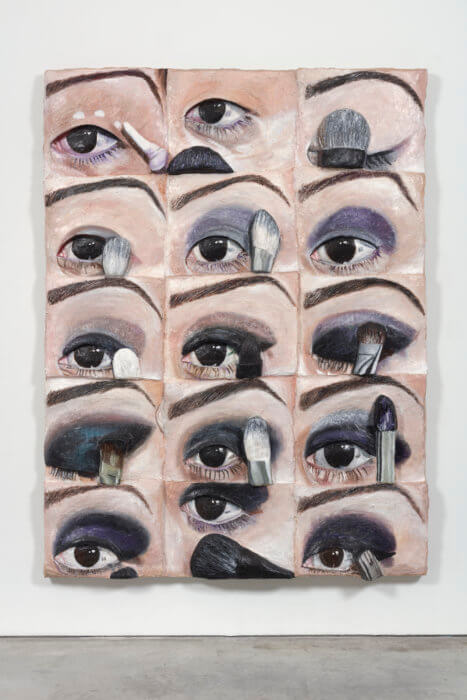
Artists include: Humaira Abid, Rodolfo Abularach, Derrick Adams, Carlos Aires, Janine Antoni, Firelei Báez, Gina Beavers, Angelica Bergamini, Huma Bhabha, Zach Blas, Justin Bower, Francesco Clemente, Julie Cockburn, Peter Combe, Esperanza Cortes, Diana Corvelle, Vanezza Cruz, Timothy Cummings, DAS INSTITUT (Kerstin Brätsch and Adele Röder), Dennis Delgado, Dale Dunning, Lauren Fensterstock, Stephen Frailey, Carla Gannis, Laurent Grasso, Gregory Halili, Peter Hamlin, Valerie Hammond, HoruX, James Jean, Laura Karetzky, Katherine Knauer, Fay Ku, Caroline Larsen, Ted Lawson, Lysiane Luong, Civil Milieu, Marilyn Minter, Felekşan Onar, Tony Oursler, Alex Prager, Joseph Raffael, Jamel Robinson, Dan Schaub, Sima I. Schloss, Laurie Simmons, Chris Smith and William Villalongo.
Exhibition Overview
The exhibition reflects differing experiences of race, ethnicity, gender and sexual identity observed by the artists — as varied as the contested role of female drivers in Pakistan; exploration into the electronic eye of surveillance and how it may discriminate against people of color; and, technological attempts to single out members of the LGBTQIA community.
“Eye-appeal” has long been a catchphrase for what we find attractive, and many images of the eye in this exhibition are drenched with beauty. Beyond its surface attraction though, the eye represents “perception” or the ability to understand, to examine, inspect or interrogate. We use our eyes to gather information from which we draw our opinions. The current moral and political climate demands that artists look at how we, as individuals, function in a large and complex society.
Among the many artistic highlights, Gregory Halili, in “Sorrow II” (2014) creates a literal depiction of the eye, while using a medium that combines historic religious symbolism with contemporary creative techniques: he chose mother of pearl, with a whiteness that resembles the sclera or outer layer of the eyeball, to create the eyes of the Virgin Mary, Our Lady of the Sorrows. The tears shed by the virgin are formed by the naturally occurring formation of pearls on the shell. The artist HoruX, in “The All Seeing Mother” (2021) turns to digital photography to reinterpret commonly seen religious images into surrealist works suffused with symbolism.
In video works, Carlos Aires comments on the power of the “eye-to-eye” connection of police power and the power of the state in the slightly ominous, but charmingly sensual “Sweet Dreams Are Made of This” (2016), while Zach Blas more overtly posits the dangers of digital recognition in his “Facial Weaponization Communiqué: Fag Face” (2012). In her highly topical 2021 “Tempting Eyes” series, Humaira Abid contemplates the politics and power of a woman’s eyes within an otherwise covered face, at a time when women’s rights to such essential activities such as driving are increasingly under threat by a resurgence of the Taliban. In “Shade” (2014), Derrick Adams creates a figure of striking contrast, as he similarly explores the politics of the covered face. In his collage only the eye is visible, combining jarring aspects of determined militancy with a feminine floral.
Laura Karetsky explores the Covid-19 crisis in “We’re Going to Have to Learn to Read the Eyes A Lot Better” (2020), by showing the eye seen through a phone or monitor lens. Her lens addresses the constant need to see and be seen through digital conversation. In a black mirror, Lauren Fensterstock’s “Scrying #3” (2017) melds the ancient and modern, both reminiscent of today’s eye-in-the-sky cameras and early scrying glass, its translucent surfaces an eye to the past, present and future. Her work forces us to face our own reflections, our own beliefs, our own souls.
The exhibition is supported by New York State Council on the Arts, Edith and Herbert Lehman Foundation, New York City Department of Cultural Affairs, The New Yankee Stadium Community Benefits Fund, Milton and Sally Avery Arts Foundation, Jarvis and Constance Doctorow Family Foundation and The Pierre and Tana Matisse Foundation.

